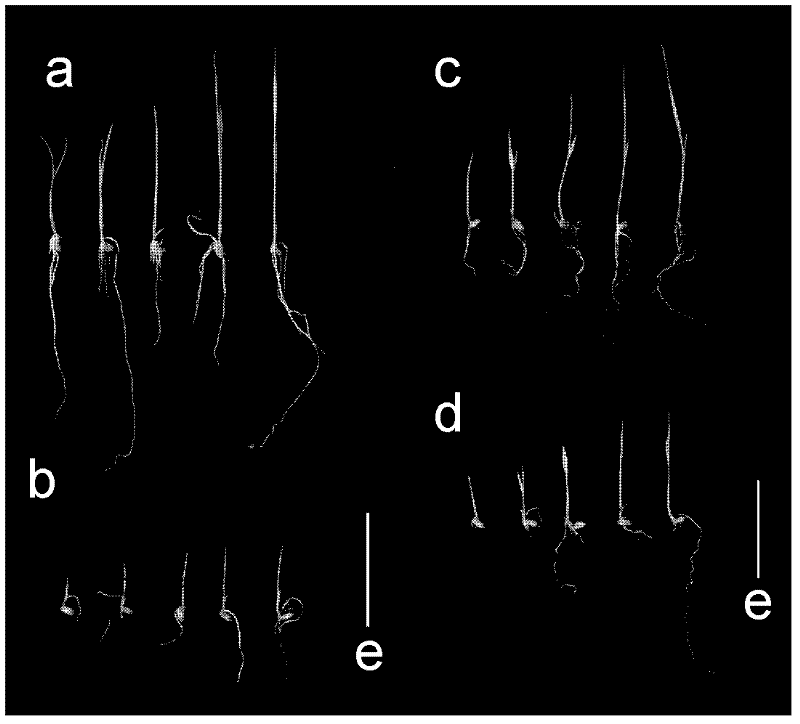Rice nitrate reductase gene nr2 and its encoded protein and application
A technology of reductase and protein, applied in application, genetic engineering, plant gene improvement, etc., can solve the problems of separation that have not been reported yet, and achieve the effect of improving utilization efficiency and increasing yield
- Summary
- Abstract
- Description
- Claims
- Application Information
AI Technical Summary
Problems solved by technology
Method used
Image
Examples
Embodiment 1
[0038] 1. Rice material
[0039] The japonica rice variety (Oryza sativa L.japonica) "Nipponbare" and the indica rice variety (Oryza sativa L.indica) "Guangluai 4".
[0040] 2. Potassium chlorate sensitivity detection for targeted populations
[0041] Using Guanglu Ai 4 and Nippon Clear's F 2 Population (720 lines) and recombinant inbred line F 7 The population (646 strains) was used as the targeting population. After the seeds germinate in an incubator at 28°C for 5 days (change the single distilled water once a day), take 10 seeds that germinate consistently from each strain, wrap half of them with germination paper and put them into a test tube filled with single distilled water As a control, the other half was wrapped with germination paper and put into a test tube equipped with 0.1% potassium chlorate solution as a treatment, and then put into a light incubator at 28°C for 12 hours of light and 12 hours of darkness. After cultivating for 7 days, the total length from ...
Embodiment 2
[0055] Plant Transformation and Functional Analysis:
[0056] The transformation vector utilizes the 9.776kb fragment (including the complete 3 introns and 4 exons of the 3.039kb NR2 gene, the complete 3 introns and 4 exons, 5.359 kb upstream sequence and 1.378kb downstream sequence) were cloned into the binary vector pCAMBIA1300 ( image 3 ). The plasmid was transferred into Agrobacterium tumefaciens strain EHA105 by electric shock method to transform rice. We used the callus induced by Nipponbare immature embryos, and after 3 weeks of culture in the induction medium, we selected the vigorously growing callus as the recipient of transformation. Using the conventional rice transgenic method, the rice callus was infected with the EHA105 strain containing the binary plasmid vector, co-cultivated in the dark at 25°C for 3 days, and cultured on a selection medium containing 40 mg / L hygromycin. Resistant calli were cultured for 10 days on pre-differentiation medium containing 50 ...
PUM
 Login to View More
Login to View More Abstract
Description
Claims
Application Information
 Login to View More
Login to View More - R&D
- Intellectual Property
- Life Sciences
- Materials
- Tech Scout
- Unparalleled Data Quality
- Higher Quality Content
- 60% Fewer Hallucinations
Browse by: Latest US Patents, China's latest patents, Technical Efficacy Thesaurus, Application Domain, Technology Topic, Popular Technical Reports.
© 2025 PatSnap. All rights reserved.Legal|Privacy policy|Modern Slavery Act Transparency Statement|Sitemap|About US| Contact US: help@patsnap.com



